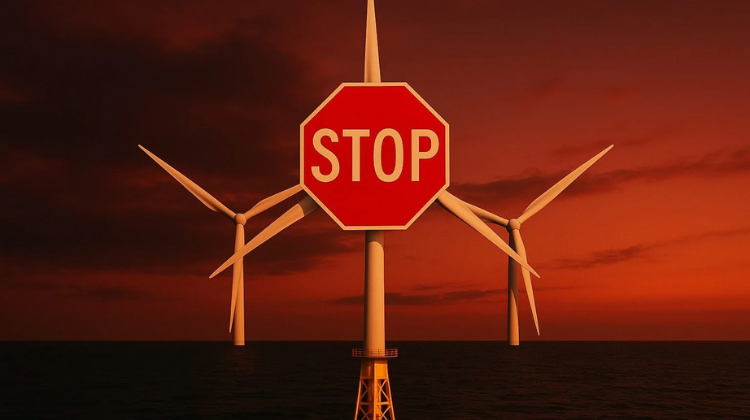Germany has taken another significant step in its energy transition: in Q1 2025, renewables accounted for 46.9% of gross electricity consumption, according to preliminary figures from the Centre for Solar Energy and Hydrogen Research Baden-Württemberg (ZSW) and the Federal Association of Energy and Water Industries (BDEW). In total, renewable energy installations generated 63.5 billion kilowatt hours (kWh) of electricity between January and March, although this figure is 16% lower than the same period in 2024 due to unfavourable weather.
“Renewable energy production is inherently variable, depending on weather conditions,” notes Kerstin Andreae, Chair of BDEW’s Executive Board. The seasonal volatility particularly affected wind energy output, traditionally one of Germany’s strongest renewable sources.
During Q1 2025, offshore wind production dropped by 31%, while onshore wind generation decreased by 22%, amounting to a total of 33.3 billion kWh, 14 billion kWh less than in the first quarter of the previous year. These technologies collectively covered roughly 25% of the country’s gross electricity consumption. This drop occurred despite the recent addition of 872 new wind turbines, contributing a combined 4.3 gigawatts (GW) of installed capacity since April 2024. Under comparable weather conditions, output would have been considerably higher.
Hydropower was also negatively affected. Due to dry conditions in February and March, electricity generation from hydro sources fell by 26% year-on-year, down to 4.2 billion kWh, identical to Q1 2023. This output represented just 3% of electricity consumption, highlighting the importance of seasonal rainfall to hydroelectric performance.
In contrast, photovoltaic (PV) generation was a major bright spot. Driven by the expansion of solar installations and an unusually sunny March, solar power generation increased by 32%, reaching 13.3 billion kWh, and accounting for 10% of total consumption. “Wind and solar power are making a growing and indispensable contribution to our electricity supply,” Andreae emphasises.
Nevertheless, the gains in solar generation were insufficient to fully compensate for the decline in wind and hydro power. According to Andreae, Germany’s energy system must now prioritise investments in flexibility and storage. “To ensure a reliable energy supply and take advantage of price peaks, we need more energy storage, enhanced system flexibility, and controllable gas-fired power stations that are hydrogen-ready.”

Infrastructure Needs and the Strategic Role of Hydrogen
Prof. Dr Frithjof Staiß, Board Member at ZSW, underscores that the rapid expansion of renewable generation must be matched with equal efforts in grid infrastructure and system flexibility. As renewables become more dominant, the need to balance supply and demand becomes more critical.
“The secure and resilient transformation of our electricity system can only be achieved by expanding infrastructure and flexibility in parallel,” says Staiß. He particularly stresses the central role of green hydrogen in Germany’s energy future. Green hydrogen, produced using surplus renewable electricity, can store energy both short-term and seasonally, and can later be converted back into power via flexible hydrogen-capable plants.
Moreover, hydrogen is not only a clean energy carrier but also a key feedstock for decarbonising heavy industry and parts of the transport sector. “Germany’s federal government must act swiftly to accelerate development in this area,” he insists. Legislative and financial incentives will be essential within the government’s first 100 days to support the deployment of controllable and hydrogen-compatible generation capacity.
A recent minor amendment to the Energy Act aims to prevent temporary oversupply from solar PV and improve the integration of solar systems into the national grid. However, sector experts caution that more ambitious regulatory reforms are required to prepare the system for the next phase of decarbonisation.
Price Context: Electricity Costs Under the Spotlight
In parallel to energy supply challenges, Germany’s electricity price dynamics remain a critical issue. According to BDEW’s Electricity Price Analysis, while renewable energy lowers marginal generation costs, overall prices for industrial and residential consumers remain high due to taxes, levies, and network charges.
BDEW calls for a comprehensive market reform to relieve the burden on consumers while maintaining incentives for clean energy investments. The organisation points out that as renewables become the cornerstone of the energy mix, pricing mechanisms must evolve to support flexible and reliable grid operation, ensuring that storage and responsive demand are rewarded appropriately.
Final Takeaway
The figures for Q1 2025 confirm that Germany’s electricity supply is increasingly anchored in renewable sources, with wind and solar leading the charge. Renewables accounted for 47.9% of gross electricity generation, reinforcing their role as the main pillars of the energy transition.
Yet, variability in generation and structural limitations within the grid demand an integrated strategy. “Only by focusing on system-wide flexibility, storage, and infrastructure can we ensure the secure and sustainable transformation of our energy system,” concludes Andreae.































